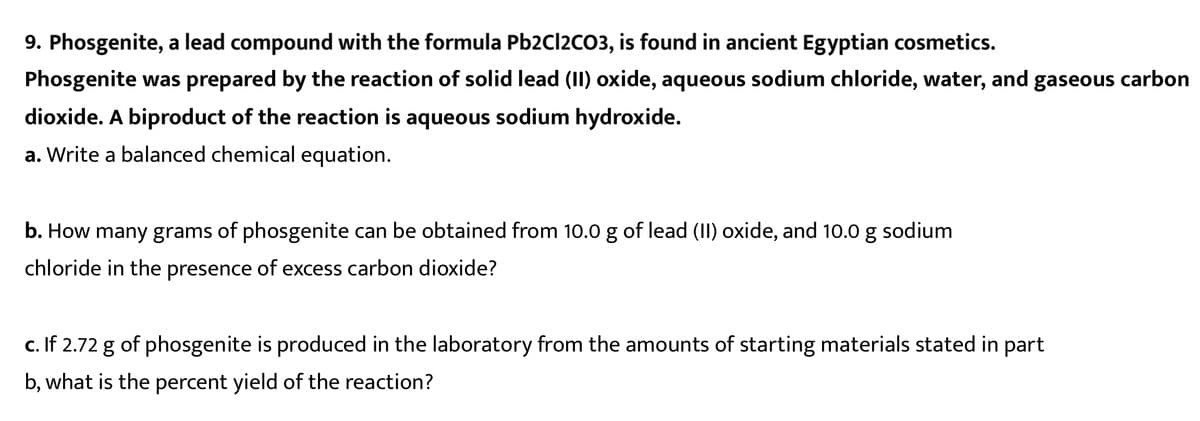9. Phosgenite, a lead compound with the formula Pb2Cl2CO3, is found in ancient Egyptian cosmetics. Phosgenite was prepared by the reaction of solid lead (II) oxide, aqueous sodium chloride, water, and gaseous carbon dioxide. A biproduct of the reaction is aqueous sodium hydroxide. a. Write a balanced chemical equation. b. How many grams of phosgenite can be obtained from 10.0 g of lead (II) oxide, and 10.0 g sodium chloride in the presence of excess carbon dioxide? c. If 2.72 g of phosgenite is produced in the laboratory from the amounts of starting materials stated in part b, what is the percent yield of the reaction?
States of Matter
The substance that constitutes everything in the universe is known as matter. Matter comprises atoms which in turn are composed of electrons, protons, and neutrons. Different atoms combine together to give rise to molecules that act as a foundation for all kinds of substances. There are five states of matter based on their energies of attraction, namely solid, liquid, gases, plasma, and BEC (Bose-Einstein condensates).
Chemical Reactions and Equations
When a chemical species is transformed into another chemical species it is said to have undergone a chemical reaction. It consists of breaking existing bonds and forming new bonds by changing the position of electrons. These reactions are best explained using a chemical equation.

Trending now
This is a popular solution!
Step by step
Solved in 2 steps with 2 images









